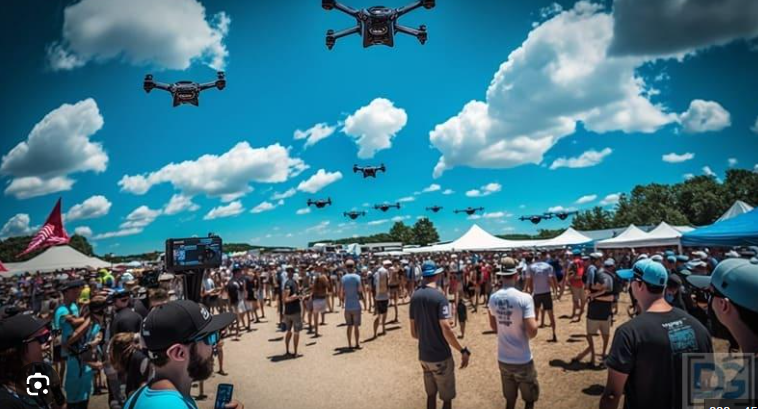Drone Racing: Discover This Exiting Hobby
Drone racing has rapidly evolved into a popular hobby. It combines the adrenaline of racing with the intricacies of aerial maneuvers. Enthusiasts pilot high-speed drones through challenging courses, offering a unique blend of excitement and skill. This hobby not only tests the limits of human control and technological innovation but also fosters a growing community of like-minded individuals.
The Thrill of Choosing Your Gear: Best Products at a Glance
Selecting the right drone is a pivotal step in embracing the hobby of drone racing. The best products at a glance offer a range of features tailored to both beginners and professionals. Speed, agility, and durability are crucial factors. High-quality drones come equipped with advanced flight controls, robust frames, and high-definition cameras, enhancing the racing experience. Essential accessories, such as controllers with precise responsiveness and protective gear, are also vital. Investing in the right equipment ensures an optimal racing experience, blending performance with reliability. As technology advances, the options expand, providing racers with an array of choices to suit their style and skill level.
Navigating the Tech of Racing Drones: Key Features for Peak Performance
Understanding the technical aspects of racing drones is essential for selecting top-tier equipment. A good racing drone is defined by several key features. Firstly, the motor’s power-to-weight ratio is crucial; it determines the drone’s speed and agility. A high thrust-to-weight ratio allows for rapid acceleration and sharp turns, essential in competitive racing. Secondly, the responsiveness of the flight controller, the drone’s brain, dictates how well it follows pilot commands. Faster processors and advanced algorithms in the flight controller ensure smoother and more precise maneuvers.
Battery life is another critical factor. Longer battery life means extended flight time, but this must be balanced against the weight of the battery. Lighter batteries may offer less flight time but improve the drone’s agility. The frame’s material also plays a significant role. Carbon fiber frames are popular for their strength and light weight, providing durability without compromising on speed.
Additionally, the drone’s FPV (First Person View) system, including the camera and goggles, is vital for a truly immersive racing experience. High-resolution cameras and low-latency video transmission systems allow pilots to see the course clearly and react swiftly. Finally, modular designs that allow for easy upgrades and repairs are highly beneficial.
Racing into the Future: An Introduction to Competitions
Drone racing is not just a hobby; it’s a competitive sport. National and international competitions offer racers a platform to showcase their skills. These events range from local meetups to world-class championships, attracting participants globally. Courses are designed to challenge pilots, featuring obstacles, tight turns, and varying elevations. Competitors navigate these courses at high speeds, aiming for precision and speed. The Drone Racing League (DRL) is a prominent example, offering a professional arena where top pilots compete.
Building a Community: Your Own Racing League
Establishing a local drone racing league fosters community spirit and provides a structured way to enjoy the hobby. Organizing races, whether informal meetups or structured competitions, brings enthusiasts together. In these leagues, members share tips, collaborate on drone builds, and compete in friendly races. Setting up a league requires planning, from finding a suitable location to establishing rules and safety protocols. Regular meetings and races keep the community engaged and provide a platform for new pilots to learn from experienced racers.
Virtual Skies: Exploring Drone Racing Games
Drone racing extends beyond physical realms into the digital world. Video games and simulators offer a virtual experience, ideal for practice and entertainment. These games replicate real-world physics, providing a realistic flying experience. They are perfect tools for beginners to learn controls without the risk of damaging actual drones. Seasoned racers use these simulations for practice, refining their skills and trying new maneuvers. Popular titles like ‘DCL – The Game’ and ‘Liftoff Drone Racing’ offer immersive experiences, letting players race on diverse tracks and customize their virtual drones.
DCL – The Game: Navigating the Virtual Skies of Professional Racing
“DCL – The Game” transports players into the exhilarating world of professional drone racing. Set against the backdrop of authentic Drone Champions League courses, the game offers a realistic simulation of the sport. Players start their journey as rookie racers, striving to make a name for themselves in the competitive drone racing circuit. The game’s story progresses as players participate in various races, each more challenging than the last, held in stunningly recreated real-world locations.
Players navigate drones through complex courses, featuring intricate turns and varying elevations, closely resembling actual DCL tracks. Achieving success in these races unlocks a variety of new drones and customization options. This enables players to fine-tune their equipment for improved performance.
Liftoff Drone Racing: A Journey From Amateur to Ace
Set in a variety of beautifully rendered environments, players begin with basic drones, learning the fundamentals of flight and racing. As the story unfolds, they face increasingly challenging courses that require not only speed but also strategic navigation.
In “Liftoff Drone Racing”, players must hone their piloting skills, tackling a variety of racing formats and environments. Each level brings new challenges, from racing against the clock in time trials to head-to-head battles against AI opponents or other players in online multiplayer modes.
Taking Flight: Learning and Advancing in Drone Racing
Mastering drone racing requires practice and dedication. For beginners, starting with basic models and learning fundamental controls is essential. As skills improve, racers can advance to more sophisticated drones, experimenting with customization and tuning. Online tutorials, local clubs, and racing leagues provide valuable resources for learning. Experienced racers often mentor newcomers, sharing insights and techniques. This continuous learning curve keeps the hobby challenging and rewarding. Mastery of drone racing is not just about controlling the drone but understanding aerodynamics, electronics, and adapting to varying racing environments.
Honing Skills Beyond the Drone: Essential Abilities for Drone Racers
Successful drone racing extends beyond just handling the drone; it encompasses a set of diverse skills. Critical thinking and quick decision-making are paramount. Racers must analyze courses and make split-second decisions during races.
Another key skill is hand-eye coordination, essential for precise drone control. This can be honed through video games and activities that require fine motor skills. Understanding the mechanics of drones, including aerodynamics and electronics, also enhances a racer’s ability to optimize their drone’s performance.


